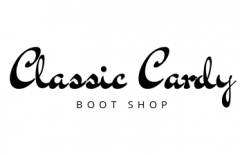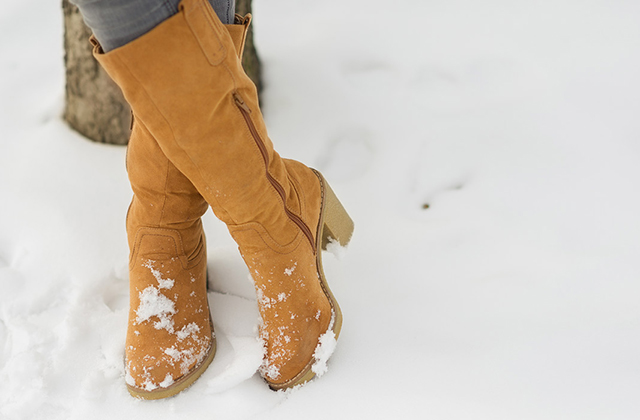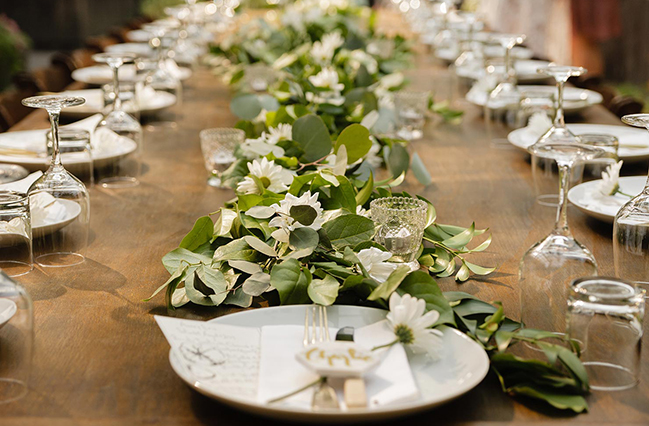Ugg Boots are a craze everywhere and for any discerning boot-lover, buying the ultimate boots is about buying these fantastically comfortable, unique-looking and long-lasting footwear, here to buy online Ugg boots. It can be tricky for a beginning skater to stay balanced in a skating boot on a very thin blade. The boot may feel more like some type of torture device rather than a honed piece of equipment. Skating boots and blades are the main pieces of equipment used for skating and the most important. The old saying that “you are only good as your equipment” is very true. It’s much better to skate to your equipment’s capabilities than trying to outskate your skates!
It won’t take you long to
realize that it is vital to invest in a good boot and blade. Rental
equipment is often not the best to learn in, and really doesn’t support
your foot properly. It is common for beginning skaters to get
discouraged simply because a pair of rental skating boots don’t fit
right. Skaters leave the ice thinking that they can’t learn this sport,
when really it may have just been faulty equipment.
When I first
started skating, I didn’t entirely understand this concept. Buying my
first pair of boots was quite the learning experience. After looking at
all of the options in the skate shop and trying on several, I decided on
a used pair of Harlicks with blades. They were in good condition, less
expensive than a brand new pair and fit my foot really well. What a
difference compared to the rental skates!
I learned a few other
things that day: I had no idea that boots and blades are actually
separate pieces of equipment. While a few manufacturers put them
together, most do not. Another thing- there are so many options!-While
it was a bit overwhelming, the skate shop employees were very helpful
and informed. There are maybe 10 boot manufacturers that most skaters
tend to use, such as Riedell, Jackson, Risport, GAM, Klingbeil, and
Edea.
Some resources I would recommend that will help you research some of the brands are:
• kinziescloset where they have good information about skating boots
• usfigureskating where they have a skating boot comparison chart
The
important thing to remember when selecting a boot is to focus on a few
key areas of the boot– the toe box, the heel and the ankle. The toe box
is the area where all your toes sit. Your toes should be able to move
up and down. Your toes should not feel cramped or feel like they are
pushing against the end of the boot. Your heel should fit snuggly into
the back of the boot and should not slip around. And, there’s the ankle,
which should feel secure but able to bend in the boot when needed.
Overall, the boot needs to feel comfortable. If you feel it pinching in
any way, try again.
The two most common brands that beginning
skaters start in are the Riedell and Jackson boot. The Riedell brand
offers a neat feature where once the boots are fitted to a skater, they
are actually taken off and placed in an oven that looks like a
microwave. This warms the lining so that it can mold to the foot. I
always thought this was such a cool concept! Jackson may do this now
too, but both are great starter boots. And, they both have a series of
boots that come with blades.
Once you select a boot that feels
good on your foot, there are four basic things to consider as to the
proper thickness or strength of the boot: 1) your height and weight, 2)
how often you skate, 3) your skating level and 4) your foot width. Your
height and weight– as an adult skater, depending on your height and
weight, you may put more leverage on a boot and will need something a
little stronger. Also, since adults don’t grow out of their skates, you
want to select a strength level that lasts a little longer than the
average skate. So, be sure to ask the person fitting your skates for
appropriate strength based upon these factors.
How often you
skate– if, as a beginner, you only skate during your lesson and one
other time during the week, then your boots will last longer and you
won’t need to consider the strength of the boot as much. If you skate
more frequently, then they will wear faster, and you may need a boot
with a little more strength to it. When I first returned to skating as
an adult, I skated 3-4 times a week! As you can imagine, this broke down
my skates quickly, and I needed a new pair of skates within the year.
So, moving up one strength level can help with this.
Your skating
level-if you are just learning, it is unlikely that you are already
jumping and spinning, which puts a lot of extra pressure on the boots.
As you progress and perform more challenging moves, the stronger your
boots will need to be to support the activity. As an example, toward the
end of my competition years, I would purchase boots with a dual bond,
which is double the leather to support my jumps and spins. While I only
performed double jumps and double combinations, there are skaters doing
triple jumps who need an even stronger boot.
Your foot width-this
is a factor just like when trying on regular everyday shoes. Every pair
fits your foot differently. As an example, I started with a used pair of
Harlick skates that fit the width of my foot perfectly. Then, when I
bought my first pair of new skates, I was talked in to buying a pair of
S.P. Terris, which tend to fit wider feet. Those boots just about ruined
my feet. S.P. Terris are not bad boots, they were just bad for my feet.
I immediately went back to Harlicks and my feet were much happier! (As a
side note, you may want to consider asking about used skates at the
skate shop. While they may not present them to you as an option, they
all have them!)
Once you progress in your skating, you can (and
probably should) move up to a custom boot. What’s great about custom
boots is that the skate shop actually traces your foot, takes your foot
measurements and sends your personal specs to the boot manufacturer. You
can order different types of lining, padding and channeling that make
the boots more comfortable. When they come back, they fit you almost
perfectly-like a glove. The reason I say almost is that sometimes the
boots need a bit of tweaking, but mostly they fit well on the first try.
Custom boots reduce the break-in period and feel amazing! While the
cost of a custom boot is more, if you are spending a lot of hours in
your boots the cost is well worth it!
For all you creative souls
out there, another bonus in purchasing custom boots is that you can
order them in all different colors and patterns! I took full advantage
of this option. Over the course of my skating career, I had tan boots,
aqua blue, purple and blue marbled, gold, silver and now I have a
beautiful bronze pair with a rose pattern imprinted in the leather. I
had so much fun in selecting the colors!
Now let’s talk about the
other important piece of skating equipment- the blades. There are less
manufacturers of blades than boots. A few of the main blade
manufacturers are Wilson, Paramount, MK, Ultima and Eclipse.
Skate
blades are often made of carbon steel and coated with high-quality
chrome. Lightweight aluminum and stainless steel blades are becoming
more common also. Blades are about 3/16 inch thick and may have a
variation on how they taper. They come in either a 7 or 8 foot radius.
Radius refers to the curvature of the blade. A radius of an 8 foot blade
is less curved, or flatter, and will give you more speed. A smaller
radius of 7 feet will make you more agile and allow for quicker response
and turns. A beginning skater often begins with a 7 foot radius and
then moves up to the 8 foot radius. Although, personally, I always
preferred the 7 foot radius and never made the switch. Each skater has
their own preference.
The radius also plays into the rocker. The
rocker is the part of the blade right in back of the toe pick. It’s
where spins are performed on the blade and it also helps with take-offs
on jumps. I liked a more prominent rocker myself so that was another
reason I preferred the 7 foot radius blade.
Last but not least,
there’s the dreaded toe pick. Those are the teeth of the blade. Anyone
who has seen the movie, “The Cutting Edge” remembers how toe picks can
cause some awful falls! As a beginner skater, you may be a bit more
hesitant about having a hefty toe pick at first but whatever the size of
the toe pick, you simply get use to it. The purpose of toe picks are
for take-offs and landings of jumps and they are used in a variety of
ways on spins and flying spins too. I skated the first 20 years of my
career on mild toe picks but then I discovered the “Phantom” blade by
MK. If you have ever seen the toe pick on that blade, it’s
frightening-at first. However, after I got used to it, I must say that
blade made a huge difference in my skating career. My jumps really began
to fly and the rocker is wonderful on these blades too so my spins
improved as well. It Great blade!
For beginners, the MK blade
called the Cornation Ace blade is good. It can take you through the
intermediate level. There are equivalent non-MK, less expensive blades
that are good, too. But once you can afford it, look at some of the
nicer blades- you’ll be glad you did! Pattern 99’s are a favorite of the
older skaters who have been around for a while and there are many newer
blades too that are just wonderful! And, don’t overlook Phantom blades
as an intermediate to advanced blade too.
There is gobs more that I
could tell you about boots and blades, but I have intentionally kept it
simple. What it all basically boils down to is to select a boot that is
comfortable on your foot, a quality blade that is above your current
level to skate up to and all in a price range you can afford.
Happy skating!
D. Cooper has been a skating coach since 1999. She tested, competed, and has her Adult Gold and tested through her Intermediate/Novice level. She still actively skates and is now learning ice dancing. She is a member of the United States Figure Skating Association and a member of the Professional Skaters Association for coaches, and she continues to actively coach students of all ages. D. Cooper is also a published author with a recently released book, “Learn How to Ice Skate, 7 Basic Moves – A Guide for the First Time Skater” which is an easy to understand, down to earth, overview of the sport for absolute beginners. Website Link:
YouTube video Link: https://www.youtube.com/watch?v=nrZvAfokPWc (learn to put on a skating boot)
Article Source: https://EzineArticles.com/expert/DC_Cooper/1970976
Article Source: http://EzineArticles.com/8724947


